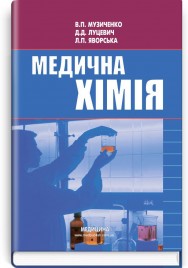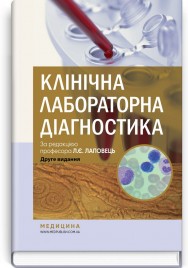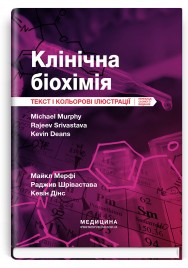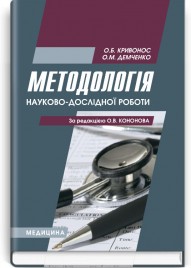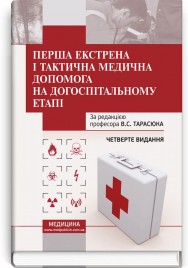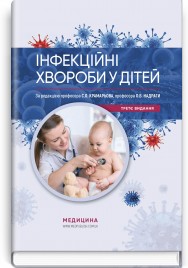Содержание книги General and Inorganic Chemistry: textbook / V.O. Kalibabchuk, V.V. Ohurtsov, V.I. Halynska et al.
Preface
PART ONE. GENERAL CHEMISTRY
Chapter 1. Fundamentals of atomic and molecular theory. Basic laws of chemistry
1.1. Basic concepts and quantities of atomic and molecular theory
1.2. Basic laws of chemistry
1.3. Calculations based on chemical equations
1.4. Ionic reaction equations
Chapter 2. Structure of atoms
2.1. From the history of the modern theory of atomic structure
2.2. The wave motion of the electron
2.3. Quantum numbers
2.4. Electron configurations (electronic structural formulas) of atoms
2.5. The Periodic law and the Periodic table of chemical elements in the light of the quantum mechanical model of the atom
Chapter 3. Chemical bonding. Molecular structure
3.1. Modern theory of chemical bonding and its basic concepts
3.2. Valence bond theory
3.3. Molecular orbital theory
3.4. Intermolecular interactions. Hydrogen bond
Chapter 4. Coordination compounds
4.1. Basic concepts of coordination chemistry. General principles of the structure of coordination compounds
4.2. Classification of coordination compounds
4.3. Isomerism of coordination compounds
4.4. Nomenclature of coordination compounds
4.5. Chemical bonding in complexes
4.5.1. Valence bond theory
4.5.2. Crystal field theory
Chapter 5. Oxidation–reduction reactions
5.1. Characteristics of redox reactions
5.2. Basic concepts of oxidation and reduction
5.3. Typical oxidants and reductants
5.4. Basic rules for writing equations for redox reactions
5.5. Classification of redox reactions
5.6. Determination of chemical equivalents of oxidising and reducing agents
Chapter 6. Classes of inorganic compounds
6.1. Oxides
6.1.1. Ways of oxide preparation
6.1.2. Chemical properties of oxides
6.1.2.1. Basic oxides
6.1.2.2. Acidic oxides
6.1.2.3. Amphoteric oxides
6.2. Oxide hydrates
6.2.1. Bases
6.2.1.1. Ways of hydroxide preparation
6.2.1.2. Chemical properties of hydroxides
6.2.2. Acids
6.2.2.1. Ways of acid preparation
6.2.2.2. Chemical properties of acids
6.2.3. Amphoteric hydroxides
6.2.3.1. Ways of amphoteric hydroxide preparation
6.2.3.2. Chemical properties of amphoteric hydroxides
6.3. Salts
6.3.1. Neutral salts
6.3.1.1. Ways of neutral salt preparation
6.3.1.2. Chemical properties of neutral salts
6.3.2 .Acidic salts
6.3.2.1. Ways of acidic salt preparation
6.3.2.2. Chemical properties of acidic salts
6.3.3. Basic salts
6.3.3.1. Ways of basic salt preparation
6.3.3.2. Chemical properties of basic salts
6.4. Relationship of the main classes of inorganic compounds
6.5. Biological role and medical use of some classes of inorganic compounds
Chapter 7. Chemical thermodynamics
7.1. Basic concepts of thermodynamics
7.2. Thermodynamic systems. Thermodynamic functions
7.3. The first law of thermodynamics
7.4. Heat of chemical reactions
7.5. Thermochemistry laws
7.6. Application of thermochemical calculations for the description of biochemical process energy
7.7. The second law of thermodynamics
7.8. Gibbs equation
Chapter 8. Chemical kinetics. Chemical equilibrium
8.1. Rate of chemical reactions
8.2. Dependence of reaction rate on reactant concentrations
8.3. Molecularity of chemical reactions
8.4. Classification of complex reactions
8.5. Effect of temperature on reaction rate
8.6. Catalysis
8.7. Chemical equilibrium. Reversible and irreversible reactions
8.8. Le Chatelier’s principle
Chapter 9. Solutions and their properties
9.1. Introduction to solutions
9.2. Solution concentration
9.3. Enthalpy of solution
9.4. Factors affecting solubility
9.4.1. Nature of solute and solvent
9.4.2. Temperature and pressure
9.4.3. Distribution of solute between two immiscible solvents
9.5. Solutions of electrolytes
9.5.1. The main concepts of the electrolytic dissociation theory
9.6. Theories of acids and bases
9.7. Self-ionisation of water. Hydrolysis of salts
9.8. Buffer solutions
9.9. Stability of complex compounds
9.10. Solubility product
9.11. Colligative properties of dilute solutions containing nonvolatile solute
9.12. Electrode potentials
PART TWO. CHEMISTRY OF THE ELEMENTS
Chapter 10. Hydrogen, water and hydrogen peroxide
10.1. Hydrogen
10.1.1. Physical properties and occurrence of hydrogen
10.1.2. Methods for preparation of hydrogen
10.1.3. Reactions of hydrogen
10.1.4. Uses of hydrogen
10.2. Water
10.2.1. Physical properties and occurrence of water
10.2.2. Chemical properties of water
10.2.3. Water purification
10.3. Hydrogen peroxide
10.3.1. Chemical properties of hydrogen peroxide
10.3.2. Uses of hydrogen peroxide
Chapter 11. Metals
11.1. Physical properties of metals
11.2. Chemical properties of metals
11.3. Electron structure of metals
Chapter 12. Group IA. Alkali metals
12.1. Physical properties and occurrence of alkali metals
12.2. Preparation of group IA elements
12.3. Chemical properties of alkali metals
12.4. Oxides and hydroxides of alkali metals
12.5. Uses of alkali metals
Chapter 13. Group IIA. Beryllium, magnesium and alkaline earth metals
13.1. Physical properties and occurrence of group IIA metals
13.2. Preparation of group IIA elements
13.3. Chemical properties of beryllium and its compounds
13.4. Chemical properties of magnesium and its compounds
13.5. Chemical properties of alkaline earth metals
13.6. Oxides and hydroxides of alkaline earth metals
13.7. Uses of beryllium, magnesium and alkaline earth metals
Chapter 14. Group VIB. Chromium, molybdenum, tungsten
14.1. Physical properties and occurrence of group VIB elements
14.2. Preparation of group VIB elements
14.3. Chemical properties of chromium
14.4. Uses of chromium, molybdenium, tungsten
Chapter 15. Group VIIB. Manganese, technetium, rhenium
15.1. Physical properties and occurrence of group VIIB elements
15.2. Preparation of manganese
15.3. Chemical properties of manganese
15.4. Uses of manganese, technetium, rhenium
Chapter 16. Group VIIIB. Iron, cobalt, nickel and platinum metals
16.1. Physical properties and occurrence of group VIIIB elements
16.2. Platinum metals
16.3. Preparation of group VIIIB elements
16.4. Chemical properties of iron
16.5. Chemical properties of cobalt and nickel
16.6. Chemical properties of platinum metals
16.7. Uses of group VIIIB elements
Chapter 17. Group IB. Copper, silver and gold
17.1. Physical properties and occurrence of group IB elements
17.2. Preparation of group IB elements
17.3. Chemical properties of copper
17.4. Chemical properties of silver
17.5. Chemical properties of gold
17.6. Uses of copper, silver and gold
Chapter 18. Group IIB. Zinc, cadmium and mercury
18.1. Physical properties and occurrence of group IIB elements
18.2. Preparation of zinc
18.3. Chemical properties of zinc
18.4. Chemical properties of mercury
18.5. Uses of zinc, cadmium and mercury
Chapter 19. Group IIIA. Boron, aluminium, gallium, indium and thallium
19.1. Physical properties and occurrence of group IIIA elements
19.2. Preparation of group IIIA elements
19.3. Chemical properties of boron and its compounds
19.4. Chemical properties of aluminium and its compounds
19.5. Uses of aluminium and boron
Chapter 20. Group IVA. Carbon, silicon, germanium, tin and lead
20.1. Physical properties and occurrence of group IVA elements
20.2. Carbon and its compounds
20.2.1. Physical properties of carbon
20.2.2. Chemical properties of carbon and its compounds
20.3. Silicon and its compounds
20.3.1. Preparation of silicon
20.3.2. Chemical properties of silicon and its compounds
20.4. Compounds of tin
20.5. Compounds of lead
20.6. Uses of carbon, silicon, tin and lead
Chapter 21. Group VA. Nitrogen, phosphorus, arsenic, antimony and bismuth
21.1. Physical properties and occurrence of group VA elements
21.2. Nitrogen and its compounds
21.2.1. Preparation of nitrogen
21.2.2. Chemical properties of nitrogen and its compounds
21.3. Phosphorus and its compounds
21.3.1. Preparation of phosphorus
21.3.2. Chemical properties of phosphorus and its compounds
21.4. Arsenic, antimony and bismuth
21.4.1. Preparation of elements
21.4.2. Chemical properties of elements and their compounds
21.5. Uses of group VA elements
Chapter 22. Group VIA. Oxygen, sulfur, selenium, tellurium and polonium
22.1. Physical properties and occurrence of group VIA elements
22.2. Oxygen and its compounds
22.2.1. Preparation of oxygen
22.2.2. Chemical properties of oxygen and its compounds
22.3. Sulfur
22.3.1. Preparation of sulfur
22.3.2. Chemical properties of sulfur and its compounds
22.4. Selenium and tellurium
22.4.1. Chemical properties of elements and their compounds
22.5. Uses of group VIA elements
Chapter 23. Group VIIA. Fluorine, chlorine, bromine, iodine and astatine
23.1. Physical properties and occurrence of group VIIA elements
23.2. Preparation of halogens
23.3. Chemical properties of halogens and their compounds
23.4. Uses of group VIIA elements
Literature



 Архив содержит книги, которых нет в наличии, но которые в ближайшее время, возможно, будут переизданы.
Архив содержит книги, которых нет в наличии, но которые в ближайшее время, возможно, будут переизданы.
 01054, г. Киев, ул.
01054, г. Киев, ул.




